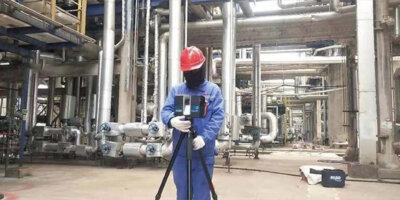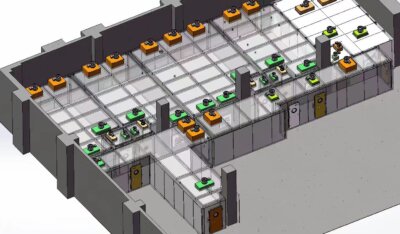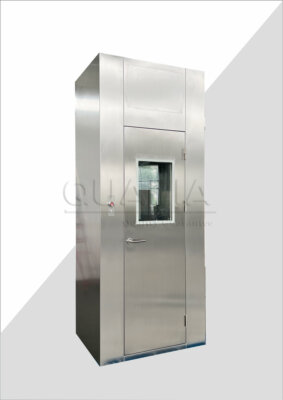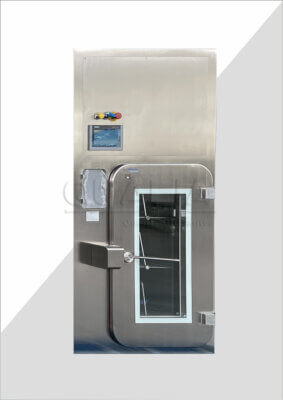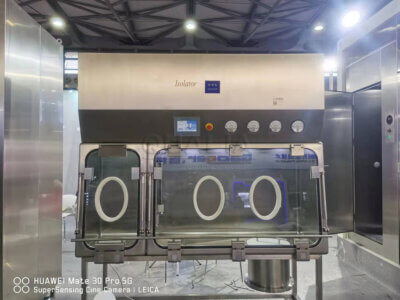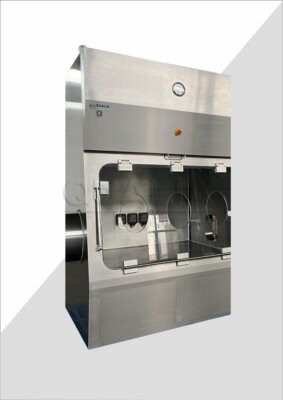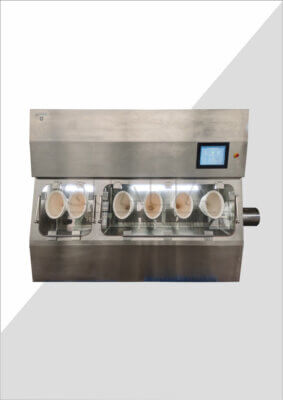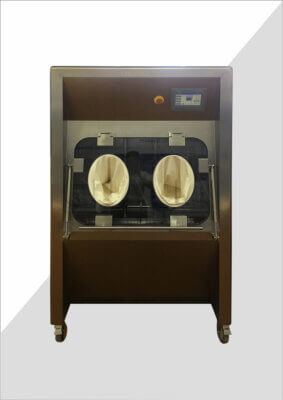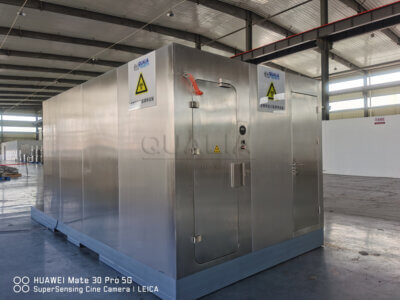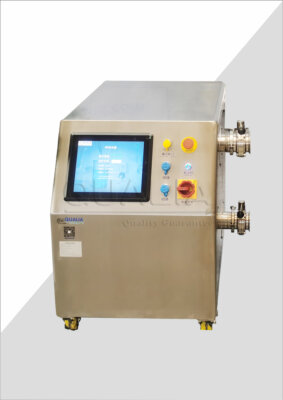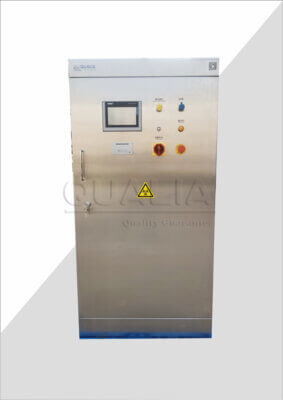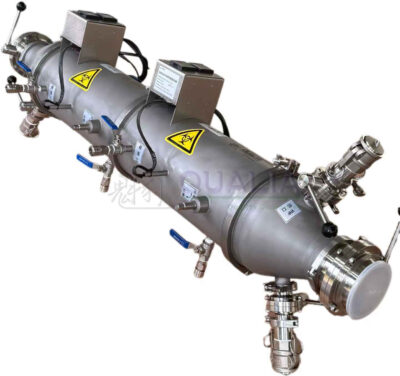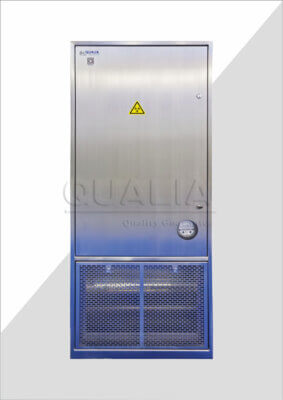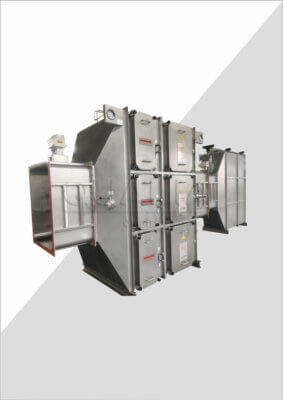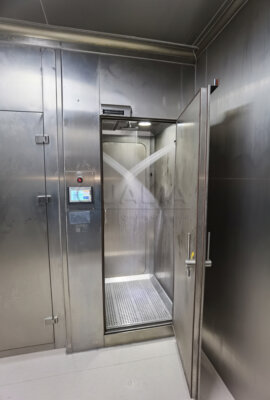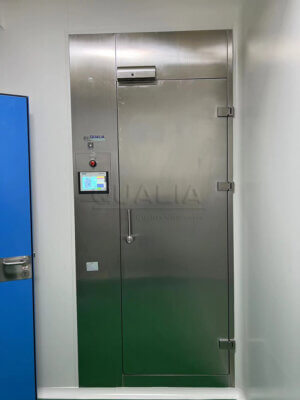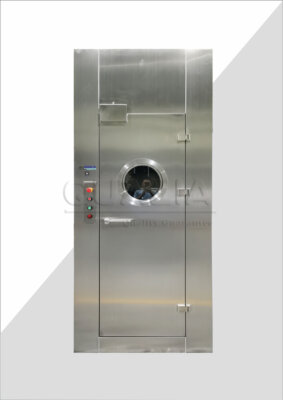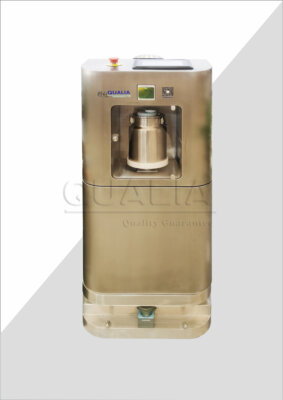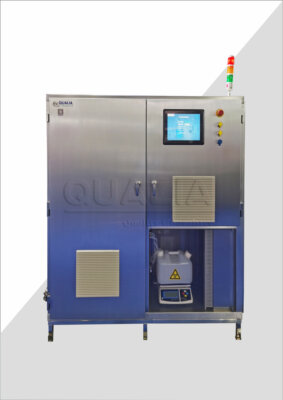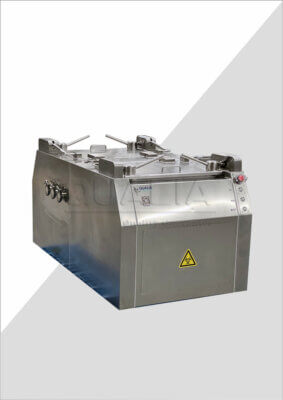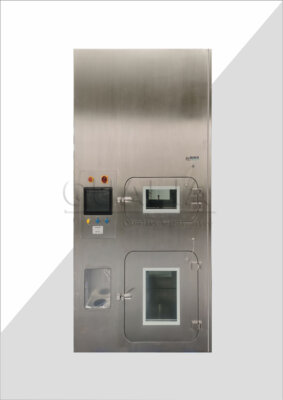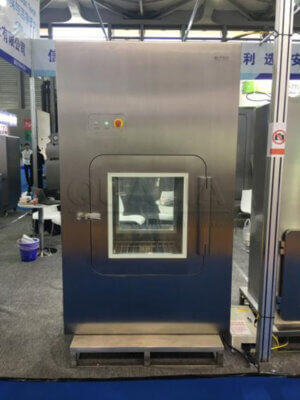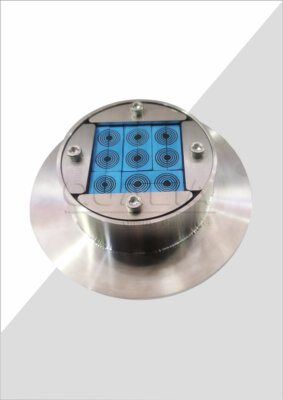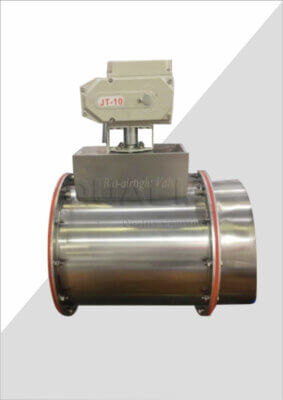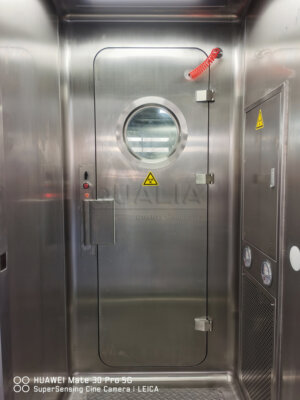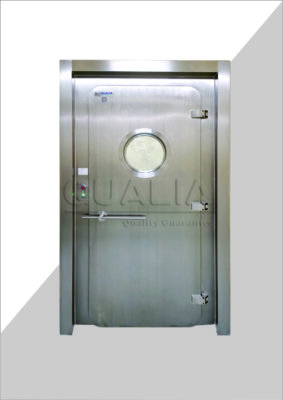In the ever-evolving landscape of laboratory design, the debate between isolators and safety cabinets has become increasingly significant. As researchers and facility managers strive for optimal space utilization without compromising safety, the choice between these two containment systems has far-reaching implications. This article delves into the space efficiency aspects of isolators versus safety cabinets, exploring their design, functionality, and impact on laboratory layouts.
The quest for efficient space management in laboratories has never been more critical. With research facilities facing space constraints and budget limitations, every square foot counts. Isolators and safety cabinets, both essential for maintaining sterile environments and protecting personnel, differ significantly in their spatial requirements. This comparison will shed light on how these differences can influence laboratory design, workflow, and overall efficiency.
As we transition into a detailed analysis, it's crucial to understand that the choice between isolators and safety cabinets isn't just about containment. It's about optimizing the entire laboratory ecosystem. From floor space utilization to ergonomics, from airflow management to maintenance accessibility, each factor plays a vital role in determining the most space-efficient solution for a given laboratory setting.
"The selection of containment systems in modern laboratories must balance rigorous safety standards with the imperative of space efficiency, ensuring maximum productivity within limited footprints."
How do isolators and safety cabinets differ in their basic space requirements?
At the core of the space efficiency debate lies the fundamental difference in the physical footprint of isolators and safety cabinets. Isolators, typically self-contained units, often require less floor space than traditional safety cabinets. This compact design can be a game-changer for laboratories with limited square footage.
Isolators generally have a smaller footprint due to their enclosed design, which allows for a more controlled environment within a confined space. Safety cabinets, on the other hand, usually require more room, not just for the unit itself but also for the necessary clearance around it to ensure proper airflow and operator access.
When considering space requirements, it's not just about the equipment's size but also about how it integrates into the laboratory workflow. Isolators, with their compact design, can often be placed in areas where larger safety cabinets wouldn't fit, offering flexibility in laboratory layout design.
"The compact nature of isolators can reduce the overall laboratory footprint by up to 30% compared to traditional safety cabinet setups, allowing for more efficient use of valuable laboratory space."
| Feature | Isolators | Safety Cabinets |
|---|---|---|
| Average Footprint | 3-5 sq ft | 6-8 sq ft |
| Clearance Needed | Minimal | Significant |
| Flexibility in Placement | High | Moderate |
In conclusion, while both systems serve critical safety functions, isolators typically offer a more space-efficient solution, particularly in laboratories where every inch counts. However, the decision must also consider other factors beyond mere square footage.
What impact do airflow systems have on spatial requirements?
The airflow systems in isolators and safety cabinets play a crucial role in their effectiveness and, consequently, their spatial requirements. Isolators, with their closed system design, typically require less surrounding space for air circulation compared to safety cabinets. This difference in airflow management can significantly impact the overall laboratory layout.
Safety cabinets rely on a combination of inflow and downflow air curtains to maintain containment, necessitating clear space around the cabinet for proper air circulation. This requirement often translates to additional buffer zones around the cabinet, increasing its effective spatial footprint. Isolators, conversely, manage airflow within their enclosed environment, minimizing external space needs.
The efficiency of airflow systems also affects the placement of these units within the laboratory. Safety cabinets often need to be positioned away from high-traffic areas and air vents to prevent disruption of their protective air curtains. Isolators, being less susceptible to external airflow disturbances, offer more flexibility in their placement.
"Isolators can reduce the spatial impact of airflow requirements by up to 50% compared to safety cabinets, allowing for more efficient use of laboratory space without compromising containment integrity."
| Aspect | Isolators | Safety Cabinets |
|---|---|---|
| External Airflow Impact | Low | High |
| Buffer Zone Required | Minimal | Substantial |
| Placement Flexibility | High | Moderate |
In conclusion, the airflow systems of isolators generally contribute to a more space-efficient laboratory design. However, it's essential to consider the specific containment needs and the types of procedures being performed when making a final decision.
How does ergonomics influence the space efficiency of these containment systems?
Ergonomics plays a crucial role in determining the true space efficiency of isolators and safety cabinets. While the physical footprint is important, the usability and comfort of these systems can significantly impact the overall space requirements and workflow efficiency.
Isolators, with their enclosed design, often require less operator movement, potentially reducing the need for extensive workspace around the unit. This compact operational zone can contribute to overall space savings. Safety cabinets, however, typically require more ergonomic considerations, including adequate space for comfortable arm and body positioning.
The design of QUALIA isolators often incorporates advanced ergonomic features that optimize user comfort within a smaller footprint. This integration of ergonomics and space efficiency is a key factor in modern laboratory design.
"Advanced ergonomic designs in modern isolators can improve operator efficiency by up to 25% while simultaneously reducing the required operational space by 15-20% compared to traditional safety cabinet setups."
| Feature | Isolators | Safety Cabinets |
|---|---|---|
| Operator Movement Range | Limited | Extensive |
| Ergonomic Design Integration | High | Moderate |
| Workspace Flexibility | Moderate | High |
In conclusion, while safety cabinets may offer more flexibility in terms of workspace, the ergonomic efficiency of well-designed isolators can contribute significantly to overall space savings and improved workflow in laboratory settings.
What are the maintenance space requirements for isolators vs. safety cabinets?
Maintenance space requirements are a critical yet often overlooked aspect of space efficiency in laboratory design. The accessibility and ease of maintenance for isolators and safety cabinets can have a substantial impact on the overall spatial needs of a laboratory.
Isolators typically require less space for routine maintenance due to their self-contained nature. Many maintenance tasks can be performed through glove ports or transfer chambers, minimizing the need for extensive access space around the unit. Safety cabinets, on the other hand, often require more clearance for maintenance activities, including filter changes and decontamination procedures.
The frequency and complexity of maintenance tasks also play a role in space requirements. Isolators, with their closed systems, may require less frequent maintenance but more specialized procedures when they do need servicing. Safety cabinets might need more regular attention but with simpler access requirements.
"Efficient design of isolators can reduce maintenance-related space requirements by up to 40% compared to traditional safety cabinets, contributing to long-term space savings in laboratory environments."
| Aspect | Isolators | Safety Cabinets |
|---|---|---|
| Maintenance Frequency | Lower | Higher |
| Access Space Needed | Minimal | Substantial |
| Specialized Equipment Required | More | Less |
In conclusion, while both systems require consideration for maintenance space, isolators generally offer a more space-efficient solution in this regard. However, the specific maintenance needs of the laboratory and the types of procedures being performed should be carefully evaluated when making a choice.
How do modular designs affect the space efficiency of these containment systems?
Modular design has emerged as a game-changer in the realm of laboratory space efficiency, particularly when it comes to containment systems like isolators and safety cabinets. The ability to customize and reconfigure these systems can significantly impact their spatial requirements and overall laboratory layout flexibility.
Isolators often benefit more from modular design concepts, allowing for customized configurations that can be tailored to specific laboratory needs and space constraints. This adaptability can lead to more efficient use of available space, as units can be designed to fit into unconventional areas or be combined for streamlined workflows.
Safety cabinets, while traditionally less modular, are also evolving to offer more flexible options. However, their modular capabilities are often limited compared to isolators due to the need for consistent airflow patterns and standardized designs for regulatory compliance.
"Modular isolator designs can improve space utilization by up to 35% compared to traditional fixed designs, offering unprecedented flexibility in laboratory layout and workflow optimization."
| Feature | Modular Isolators | Traditional Safety Cabinets |
|---|---|---|
| Customization Options | High | Limited |
| Reconfiguration Ease | Easy | Challenging |
| Space Adaptability | Excellent | Moderate |
In conclusion, the modular design capabilities of modern isolators provide a significant advantage in terms of space efficiency and adaptability. This flexibility allows laboratories to optimize their layout for current needs while remaining adaptable to future changes, a crucial factor in today's dynamic research environments.
What role does containment level play in the space requirements of isolators and safety cabinets?
The level of containment required in a laboratory setting plays a pivotal role in determining the space requirements of both isolators and safety cabinets. As biosafety levels increase, so do the spatial needs and design complexities of these containment systems.
For lower containment levels, the space difference between isolators and safety cabinets may be less pronounced. However, as we move to higher biosafety levels (BSL-3 and BSL-4), the spatial advantages of isolators become more apparent. Isolators can often provide higher levels of containment within a smaller footprint, crucial in high-security laboratory environments.
Safety cabinets at higher biosafety levels typically require more surrounding space for airflow management and additional safety features. Isolators, with their enclosed systems, can often achieve the same level of containment with less impact on the overall laboratory space.
"In BSL-3 and BSL-4 environments, isolators can reduce the required containment area by up to 40% compared to equivalent safety cabinet setups, significantly impacting overall laboratory design and space utilization."
| Containment Level | Isolator Space Efficiency | Safety Cabinet Space Requirements |
|---|---|---|
| BSL-1 | Moderate Advantage | Standard |
| BSL-2 | Significant Advantage | Increased |
| BSL-3/4 | Major Advantage | Substantially Increased |
In conclusion, as containment requirements become more stringent, the space efficiency of isolators becomes increasingly advantageous. This factor is particularly crucial in high-containment facilities where space is at a premium and safety is paramount.
How do workflow considerations impact the space efficiency of isolators vs. safety cabinets?
Workflow considerations are integral to assessing the true space efficiency of isolators and safety cabinets. The way these systems integrate into the overall laboratory workflow can significantly impact their spatial requirements and the efficiency of the entire facility.
Isolators, with their enclosed design, often allow for more streamlined workflows within a compact space. They can be integrated into production lines or research processes in ways that minimize movement and maximize efficiency. This integration can lead to overall space savings in the laboratory layout.
Safety cabinets, while offering more open access, may require additional surrounding space to accommodate workflow patterns. The need for operators to move in and out of the cabinet area can necessitate larger clear zones around the unit.
The Space requirements for efficient workflow in isolator-based setups are often more compact, allowing for denser equipment placement and potentially more efficient use of laboratory space.
"Optimized isolator-based workflows can improve laboratory space efficiency by up to 30% compared to traditional safety cabinet setups, leading to more compact and productive research environments."
| Aspect | Isolator-Based Workflow | Safety Cabinet Workflow |
|---|---|---|
| Movement Efficiency | High | Moderate |
| Equipment Density | High | Lower |
| Process Integration | Seamless | Requires Planning |
In conclusion, while both systems can be integrated into efficient workflows, isolators often offer advantages in terms of compactness and seamless process integration, potentially leading to more space-efficient laboratory designs.
What future trends in laboratory design might affect the space efficiency of isolators and safety cabinets?
As we look to the future of laboratory design, several emerging trends are set to influence the space efficiency debate between isolators and safety cabinets. These innovations promise to reshape how we think about containment systems and their impact on laboratory space utilization.
Advancements in materials science and engineering are leading to the development of more compact, yet highly effective containment solutions. Future isolators may incorporate smart materials that adjust their properties based on containment needs, potentially reducing their size while maintaining or even improving safety standards.
The integration of artificial intelligence and robotics into laboratory processes is another trend that could significantly impact space requirements. Automated systems might allow for even more compact isolator designs, as human ergonomic needs become less of a limiting factor.
Sustainability considerations are also driving innovations in laboratory design. Future containment systems may be designed with energy efficiency and reduced environmental impact in mind, potentially leading to more compact, resource-efficient designs.
"Emerging technologies in laboratory design are projected to reduce the spatial footprint of containment systems by up to 50% over the next decade, with isolators likely to see the most significant advancements in space efficiency."
| Future Trend | Impact on Isolators | Impact on Safety Cabinets |
|---|---|---|
| Smart Materials | Significant Reduction in Size | Moderate Improvement |
| AI and Robotics Integration | Major Space Efficiency Gains | Limited Application |
| Sustainable Design | Compact, Eco-Friendly Models | Incremental Improvements |
In conclusion, while both isolators and safety cabinets will continue to evolve, the inherent design advantages of isolators position them to benefit more significantly from future technological advancements in terms of space efficiency.
As we conclude our exploration of space efficiency in isolators versus safety cabinets, it's clear that this is a multifaceted issue with significant implications for laboratory design and functionality. While both systems have their merits, isolators generally offer superior space efficiency across various criteria, from basic footprint to advanced workflow integration.
The compact nature of isolators, combined with their adaptability to modular designs and advanced containment capabilities, positions them as a more space-efficient solution for many laboratory settings. This advantage becomes particularly pronounced in high-containment environments and facilities where space is at a premium.
However, it's crucial to remember that the choice between isolators and safety cabinets should not be based solely on space considerations. Factors such as the specific nature of research, regulatory requirements, and long-term flexibility needs must all be carefully weighed.
As laboratory design continues to evolve, driven by technological advancements and changing research needs, the space efficiency of containment systems will remain a critical consideration. The trend towards more compact, intelligent, and integrated solutions suggests that isolators may continue to gain an edge in space efficiency.
Ultimately, the decision between isolators and safety cabinets should be made holistically, considering not just space efficiency but also safety, functionality, and long-term adaptability. By carefully evaluating these factors, laboratories can create environments that are not only space-efficient but also optimally suited to their specific research needs and future growth.
External Resources
Space Requirement – archibus.net – Explains the concept of space requirements, collection and documentation of space needs and costs, and integration into portfolio scenarios and stack plans.
Define Space Requirements Task: Overview – archibus.net – Provides an overview of defining space requirements, including immediate and future needs, and working with these requirements in portfolio scenarios.
What is Spatial Requirements in architecture? – content.icelabz.co.uk – Discusses the importance of spatial requirements in architecture, including needs assessments, zoning regulations, and optimizing space use for functionality and comfort.
Space Planning: Understanding Space Requirements – Facility Executive – Focuses on the importance of understanding space requirements in facility management, including assessing occupant needs and optimizing space usage.
Space Requirements and Space Planning – IFMA – Discusses how to determine and manage space requirements effectively in various types of facilities.
Space Requirements Analysis – WBDG – Provides a detailed analysis of space requirements, including methods for determining space needs, and integrating these into the design and planning process.
Related Contents:
- Compact BSL-4 Labs: Innovative Design Trends
- Recirculating Biosafety Cabinets: Efficiency & Safety
- ISO 14644 and Biosafety Cabinets: Clean Air Standards
- Containment Isolators: Safeguarding Lab Processes
- Class I Biosafety Cabinets: Features & Uses
- Operator Safety: Isolators vs. Safety Cabinets
- Biosafety Isolators vs. Cabinets: Containment Guide
- Benchtop Biosafety Cabinets: Compact Lab Protection
- Biosafety Cabinet Sizes: Finding the Perfect Fit


